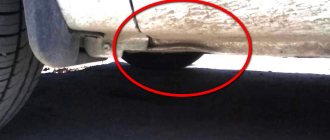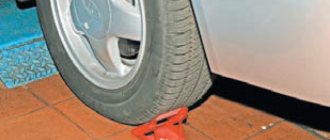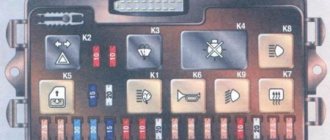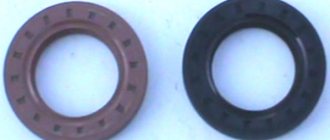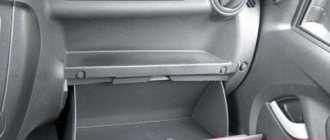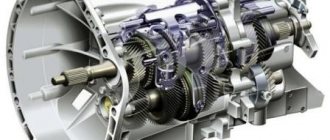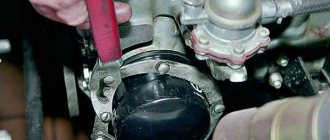Possible problems
Of all the reasons why a jack (diamond-shaped, rolling or bottle) may not function, 3 key situations should be distinguished: a malfunction of the rod, a clogged system or failure of the valves. Let's look at each point in more detail.
System clogged
It can be caused by the penetration of dirt, dust or air into the oil. When air enters, the supporting rod of the jack may stop rising, begin to spring intensely, or completely sit down under the load.
Accumulated lumps of dirt can inhibit the movement of valves, which will no longer seal the channels hermetically, allowing oil to pass in both directions.
In this situation, the emphasis will not be held in one position, gradually descending to the starting point.
Ball valve malfunction
In addition to blockages, mechanical defects may occur . The ball valve at the tip of the spring, resting against the cone-shaped groove, can separate or get caught on other components of the system. Then the rod will not come out at all, since the oil circulation in the system is disrupted, and pumping does not occur. This malfunction is more complicated and requires disassembling the jack. If there are signs of wear on the ball valves, they must be replaced.
A bent rod may be a consequence of failure to comply with storage or maintenance conditions and may result from working with heavy loads and as a result of non-compliance with the rules of use. In the first episode, the piston may become covered with rust, which will weaken the tightness of its connection to the surface of the cylinder, as a result of which oil will leak. If you lift loads higher than the permitted limit, the rod may bend. The possibility of such a malfunction increases with the maximum extension of the screw and the jack installed crookedly on the ground. A bent rod is a very serious malfunction that can rarely be corrected even by specialized services.
Replacing damaged high pressure hoses
From all of the above, we can conclude that the repair of high pressure hoses consists of either replacing the damaged area or replacing fittings that have become unusable.
When replacing a damaged area, as well as when replacing fittings, you will need to crimp the couplings, that is, technologically these two actions are very similar.
High pressure hoses
The sequence of operations looks like this:
- The damaged sleeve is disconnected from the main mechanism.
- A new sleeve is cut to the size of the old one on a cutting machine. Moreover, for measurement, the distance between the ends of the nipples at its ends is taken. It is better to choose a hose pump designed for a higher pressure than that for which the old hose pump was designed.
- The markings on the sleeves will help you choose the right diameter.
The factory marking DN indicates the diameter of the internal channel of the hose.
If a hose designed for high pressure (heavy hose) is to be repaired, its ends are stripped inside and out to the metal braid. This operation is performed on debarking machines. Then select the necessary fittings. This can be fraught with certain difficulties, since imported fittings are manufactured to different standards. In case of difficulties, the easiest way is to take measurements on the old fitting with a caliper and a thread gauge, which will allow you to accurately set the required diameter and thread pitch and then select the necessary parameters for the new fitting using the tables. After debarking and selecting fittings, they are crimped on crimping machines. Removable crimping jaws are selected for each diameter. Next, the quality of the crimping must be checked. A control probe is used for this, but it is best to carry out testing on a special test bench.
If a non-standard connection is encountered, repairs are carried out using a repair fitting. To do this, take the head of the old fitting, to which the part to be crimped is soldered.
High-pressure hoses
This method is often used by car enthusiasts for emergency repairs of power steering hoses, as well as by owners of Kircher pumps and miniwashes.
What to do?
Doesn't hold under load
The lowering of the rod when it rests on the lifted load and sometimes without much pressure happens for 2 reasons: lack of oil or failure of the valves. Let's consider each option separately.
The lack of oil is due to normal leakage due to poor sealing; the jack bypasses oil. As a rule, this is the result of prolonged storage of the jack with the shut-off valve turned off or the wear of the gaskets. The issue can be resolved by adding oil and bleeding the device. It is advisable to use specialized oils for hydraulic systems; at worst, ordinary technical oils will do. If after filling the oil leaks even with the tap tightly closed, you need to buy a repair kit and change all the seals.
Valve failure may be due to contamination of the system or a mechanical defect. There is no need to disassemble the lifting device right away.
It would be wiser to first rinse the channels and internal surfaces that are dirty. For this purpose, drain all the oil from the device and add flushing liquid (gasoline or kerosene will do). It is pumped several times, the used liquid is drained, clean liquid is poured in, and so on 2 more times.
If washing has no effect, you will need to disassemble the jack and inspect the valves. They may not fit tightly due to loose springs or have deformed or worn out balls. The first reason is the most likely and can be corrected by rotating the spring or adding a small washer under it to increase the pressure by reducing the distance to the valve. A worn or deformed ball needs to be replaced.
Doesn't lift well
One of the most common problems is reducing the piston stroke speed to a minimum or idling too much. This malfunction is often associated with a reduction in lift height and a decrease in the maximum load. The main reason for such a problem lies in the airing of the system, which occurs as a result of a decrease in the oil level. Restoring the hydraulic jack to functionality in such a situation is quite simple. To do this, you will need 150-300 milligrams of oil and flushing liquid (if the device is older than 2 years).
First, the shut-off valve is loosened one turn from the tightened position. Then the pump rod is lowered, the stop is all the way to the end.
The plug on the fill hole is unscrewed or removed (if it is made of rubber), and the used oil is drained. When the device is many years old, it is possible that its channels and the surface inside are clogged with dirt, which can be an equally significant reason why the jack does not lift well. It needs to be washed, it wouldn't hurt to wash it several times.
Recommendations for use
Replacing the heater radiator on a VAZ 2107. how and what to do
Compliance with the rules of use of any tool allows you to maximize its service life. Naturally, hydraulic jacks are no exception. Thus, in particular, it is strongly recommended to release the equipment from the load after completion of work. In addition, the key to the longevity of the lift will be its proper storage, taking into account the negative effects of moisture and low temperature.
You can learn about the operating features of a hydraulic jack from the following video.
At the same time, attention should be paid to the condition of the working fluid. By the way, so-called waste is often poured into the cylinders of jacks.
This in itself has an extremely negative impact on the functional performance of the jacks.
During active use of the devices, it is recommended to change the oil and pump the system every 2-3 months. If the hydraulic jack is rarely used, then such procedures can be repeated every six months.
During the maintenance process, you should focus on the following important points:
- volume and quality of oil;
- presence of air bubbles;
- cleanliness and tightness of the valves.
Most often, all problems arise precisely because of a lack of working fluid. They can be solved by simply adding oil. However, you need to know what exactly needs to be added to the hydraulic jack reservoir. In principle, the equipment is capable of operating, albeit for a short time, on ordinary water. But high-quality liquid will provide adequate performance and durability.
How to properly change the oil in a hydraulic jack is shown in the following video.
When choosing a specific filling material option, it is necessary to take into account important features. It is recommended to avoid using brake fluid as it can absorb moisture which can cause corrosion. Also, you should not choose materials that are of mineral, petroleum or glycol origin. The best option would be synthetic oil, which, among other things, is resistant to low temperatures.
Lifting mechanisms often fail at the most inopportune moments, which can pose a serious danger. Based on this, it is strongly recommended to follow certain operating rules for lifting devices of the category in question.
At the same time, attention is focused on the following key points:
When installing the jack, you must make sure that it is firmly located on a hard and as level surface as possible.
It is also important that the stop and the lifted load are parallel to each other. When lifting the vehicle, the support should be on the strongest possible structural elements. Lifting should be done using smooth movements of the working cylinder lever. It is important to ensure that the load being lifted remains stationary. The use of stands is mandatory in most cases. After completing the work, it is necessary to clean the rod from dirt, if any. The hydraulic jack should be stored and transported only in the position specified in the instructions developed by the manufacturer and included with the equipment.
Bottle and roll-type devices must be in a vertical and horizontal position, respectively. Store jacks with lowered rods, extending screws and pump pistons. It is recommended to periodically lubricate the listed elements. As the working fluid dries and evaporates, it needs to be added and the system pumped.
Compliance with the listed rules will allow you to maximize the safety of the process of lifting and securing heavy loads using hydraulic jacks. This will also help to extend the life of the equipment many times over.
It is important to take into account the features of each type of device and specific models.
An overview of the disassembly and repair of a hydraulic jack is presented in the following video.
Recommendations
To increase the service life of the jack, it is advisable to follow the following rules.
- The lifting device oil must be changed twice a year. If the hydraulic jack is used every day, then it must be replaced at least once a month and must be washed.
- Any replacement oil can be used . But for the winter season, it is advisable to fill exclusively with synthetic types of oils.
- To prevent the lubricant from thickening in winter, the jack should be kept in a dry and warm room.
- When lifting work is carried out in winter, it must be remembered that if the device is used for a long time in severe frost, it can become unusable. In this regard, it is recommended to work with it in the most extreme cases and for a short time.
The ideal “repair” of a lifting device is preventative work to prevent breakdowns, in other words, continuous maintenance and timely replacement of the working fluid with pumping. Since eliminating any malfunction will require spending personal time, and sometimes some money. In this regard, it is necessary to follow all instructions for using hydraulic lifting devices, in which case they will work for quite a long time.
For repairs to a hydraulic jack, see below.
Tips for replacing fluid and operating the device
As you have seen, repairing jacks yourself is a fairly simple job. However, of course, you don’t want to bring it to repair work, because this requires both time and effort to implement. That is why we have compiled a selection of recommendations from experts for you. If you follow them, the operation of your jack will become much easier, and repairs can be “pushed” further away.
Recommendations:
- In order for the oil change work to proceed efficiently and correctly, it is necessary to remove any loads, and the device itself can be started to be used only after you have completely completed all the work and assembled the jack;
- It is advisable to replace the “fuel” twice a year, and if you use the jack constantly, then at least once a month you need to carry out this work, and you must wash the entire mechanism every time;
- You can choose any oil, but if you are going to use the device in the winter, be sure to use a synthetic solution. This will allow the mechanism to always be in “full combat readiness” for work;
- Regardless of what time of year it is outside, it will be better if you can store the tool in a dry and warm place, otherwise the oil may simply freeze;
- If it is necessary to carry out work in the winter season, remember that working in the cold for too long can lead to damage to the device, and therefore the use of the jack is possible in the most extreme cases and for a short time.
If you work using these methods, you can significantly extend the life of the jack. And expensive repairs, which can cost you a significant amount, can be “postponed” for an indefinite period, which is good news!
How to register
Use of all the benefits of a personal account is available to existing clients of the provider after concluding an agreement. To register, you need to go to the official website www.akado.ru via a PC, tablet or phone, doing the following:
1. In the upper right corner, select “Personal Account”.
2. For authorized users, login using a login or contract number and password, and for those who logged in for the first time or forgot their password, you need to follow the link “Are you logging in for the first time or have you forgotten your password?”
3. Select authorization by E-mail or phone number.
It is important to indicate exactly the data that was specified in the contract, otherwise the system will not be able to find the information and access to Akado’s personal account will be unavailable.
4. We confirm access to the mailbox through the link in the letter, and the phone number - with a special code.
The car fell off the jack: what to do now?
This happens quite often - when installing a spare tire, the car slides off an unstable support and, with the wheel removed, falls with its bottom directly onto the asphalt. The incident is usually unexpected: what to do?
The fact that the car falls off the jack is not too surprising. After all, when we lift the car to change a wheel, the structure is not very stable. The heavy body, in a warped state, is supported by three softly fixed wheels and a jack - a thin articulated stand, which itself rests on the ground through a patch the size of a child’s palm. None of these four supports are reliable, which is why it is so important to ensure that the wheels are stationary and the jack is in the correct position.
The standard jacks of most cars do not require much effort when used, but they confidently hold the car only on an ideal surface.
What actually happens if a car falls off a jack? First of all, the danger is that it can injure a person - therefore motorists are warned not to hold their arms, legs or other parts of the body under the car when working with a suspended car.
Secondly, damage to components located below is possible from unauthorized contact with the surface of the planet. And thirdly, a car that lies firmly on its “belly” on the ground is not so easy to lift later in order to finally put the wheel in place. Actually, this is what we will talk about.
Possibilities
AKADO Telecom provides a number of advantages for its clients:
- Access to the service even when the Internet is blocked or unpaid . You can make changes to the services provided or pay a bill without leaving your home and without spending mobile Internet traffic. It’s quite easy to forget to pay for the Internet, which is why there is an automatic payment function.
- Automatic payment settings - on the last day of the month or a specific day of the week, the option will save you from performing unnecessary actions and wasting time - you can view all transactions on the account in your account.
- The mobile application allows you to quickly manage services and use partner bonuses.
- The promised payment extends the use of digital services for 5 days, so as not to limit the user in case of unforeseen situations.
Hydraulic jack malfunctions and their elimination
- Possible problems
- What to do?
- Recommendations
Hydraulic jacks are used when carrying out activities involving lifting various objects to a certain height. The units may differ in load capacity, type, purpose, but their structure and operating principle are identical, therefore, problems with lifting mechanisms are similar.
Data protection
The company carries out effective multi-level work to protect clients’ personal data and the security of financial transactions in the system when working from a PC or mobile device. Provides services to protect clients from hacking and information theft:
- high-quality certified protection of web services and hosting (official certification has been passed for compliance with data security conditions);
- protection against DDoS attacks for clients of different levels of use: from corporate companies to individuals (IP addresses are protected around the clock by ARBOR equipment and other security systems);
- protection of financial transactions and personal data: encryption, confirmation by SMS code, and notification of changes via SMS alerts. To use this convenient service, registration is required, but it will not take much time and will save time later. If you have any questions or problems with registration, please contact your online consultant. Make your life more comfortable by making room for what’s important, entrusting your routine to reliable specialists and proven systems!
It is worth noting that if any problems or questions arise regarding interaction with your personal account, the company’s subscribers can contact the Hotline.
DIY jack repair
It is difficult to find a replacement hydraulic jack for the purpose of lifting and holding equipment. There are various signs that indicate equipment failure. For example, lifting a load is difficult, and the level of lifting height can be significantly reduced.
It is possible that a large number of moves must be made to install the device at the required height. If the hydraulic jack does not go down, this is a clear sign that it is broken. Knowing some breakdowns will help you decide on the choice of pumping method. This includes:
- The presence of rust inside the device, which limits the process of lowering the mechanism to the required position.
- Excessive load experienced by the device, which leads to bending of the rod.
After disassembling the unit, you will notice that the device has a cylinder containing a piston or rod that moves inside it in the presence of working oil. Pressure on the fluid is created during the operation of the cylinder valve. There is a pump that directs the liquid into the cylinder.
The device lowers the load at a speed controlled by the presence of an opening. It is necessary for the incoming liquid to flow out of the cylinder. The jack has threads on the rods, bodies and bases.
Activities for disassembling the jack
Jack repair diagram.
To open the unit, follow these basic steps:
- The unit is completely disassembled using keys.
- Unscrew the fastening elements.
- Remove the valve from the device, which bleeds the oil, as well as the primary piston.
- A detailed inspection of the unit is carried out to check the quality of the special valve ball and gaskets in order to replace them.
- Clean the device from excess elements and flush the system.
- After opening the unit, change the oil.
This must be spindle oil of a high grade or Total LHM+ type. Next, install other rubber bands and drain the used oil.
To completely drain, the lifting part of the device is moved down and then up. Open chambers allow the release of all piston fluid. The device's pressure spring must be removed. Next, close the valve by bleeding the oil using a shut-off ball. To accurately get the oil into the device, you need to lift the jack up and then lower it down. At the end of the work, fasteners are installed: pins and studs.
The device is equipped with two valves - fittings that open under pressure. Each of them has a spring-loaded “plug”, which is a nail with a head. Its tip should fit into a small hole, and the cap will rest against a special spring.
Read also: Copy device for wood lathe
The first valve is usually opened by pressure from the lever and is unscrewed to release. The oil is launched into the large “holding” cylinder after it has passed through the small “pumping” cylinder. When the pressure from the lever drops, the valve begins to hold oil while being closed. The second valve is necessary for etching into the reservoir from the large “holding” cylinder under overload conditions.
Before lifting the load, the jack is adjusted to a certain mass of the load so that it cannot burst during pumping, otherwise some parts may simply fly out of the mechanism body. Therefore, pumping the jack requires compliance with safety measures.
First, both valves are disassembled to check where the spring with the “nail” is located and whether they are in the correct position. Disassemble the device by laying down some material or newspaper. They make sure that not a single little thing can fly out of its place and get lost, since a replacement part will then be very difficult to find.
If malfunctions occur after pumping the jack, it is necessary to fill oil through one of the valves, possibly through the first one. The jack foot should be slowly raised by hand, and the fitting should be directed upward, so that when lowering, air can escape, but not completely. This may cause the rubber plug, which is shaped like a large rivet on the surface of the cylinder, to fly out.
By disassembling the second valve, it is adjusted again, taking into account the correct weight. There is no need to tighten it too much, since air deflation occurs under load. Carrying out gradual twisting, lift the load of the established weight. After this, pumping stops. Then they check the possibility of descent in case of excess weight.
The hydraulic jack has stopped lifting and does not hold under load.
Reading time: 5 minutes
There are many types of lifting mechanisms, the most common among car enthusiasts is the hydraulic type of jacks (bottle, rolling). If improperly maintained, jacks can fail, for example, they stop lifting loads. And the question immediately arises of what to do if the hydraulic jack does not lift. You don’t have to buy a new one right away; there is always a way out; often everything can be fixed by performing maintenance on the unit.
Types, properties and characteristics of hydraulic bottle jack
Which 2 ton rolling jack is better?
Jacks are divided into several types, the first division is based on the number of rods (half-rams):
- Single-stem bottle, the most common type Fig. 2.
- Double stem bottle Fig 3.
Fig 2. Single-rod jack
Fig 3. Double-rod jack
There is also a division based on the operating principle of the pump pumping liquid:
- Manual, activated by user pressure on the lever
- Large pumps designed to lift enormous masses are driven by a separate drive, hydraulic pump or hydraulic station.
Properties:
Load capacity is an important parameter that determines the maximum liftable weight. The parameter depends on the volume of the working chamber and strength characteristics. Bottle-type devices have a load capacity from 2 to 100 tons.
The minimum lifting height, otherwise called the minimum pick-up height. This is the height at which the load must already be in order to be able to place a jack under it.
Please pay attention to the minimum height if you are selecting a device for a car. If you have low ground clearance, then a bottle-type device due to its high design will not suit you
Maximum lift height. The height to which a load can be lifted. The bottle ones have a special feature: on the support platform there is a retractable screw that increases the minimum and maximum lifting height.
Briefly about the main faults
- Stop. Occurs due to the lack of liquid in the chamber or the presence of contaminants in the oil.
- Insufficient lift height. Occurs due to a limited amount of working fluid.
- Slow rise, jerks. Explained by the presence of air, as well as a possible leak in the hydraulic system.
- Reduced pressure. The valve needs to be diagnosed or replaced. In this case, the jack also stops holding, lifting completely, springing, and can lower the load on its own.
Most often on forums you can find complaints that the hydraulic jack does not lift.
How does a hydraulic jack work?
To accurately determine the cause of the breakdown and its subsequent elimination, you should have a clear understanding of the operating principle of the device. Fortunately, hydraulic jacks are quite simple, and most of their problems can be fixed on your own. Contacting service may be necessary in cases of serious defects or a complete lack of desire to read the repair instructions. The foundations for understanding the operation of the device should be laid by analyzing the main components of its mechanism.
Before describing the functional elements, it is worth noting that hydraulic jacks have several subtypes and are divided into rolling, bottle and diamond-shaped. The classic type of liquid lifting mechanism is most closely related to the bottle type, which includes devices with a telescopic, hollow, hook-on and standard rod. To form a correct basic idea, we will analyze the original model without additional modifications. So, a hydraulic bottle jack consists of the following components:
Read also: Do-it-yourself stationary electric planer
- Body base
. Support platform for installing the device on a flat surface. - Frame
. The outer part of the hydraulic jack and, in combination, the oil reservoir. - Plunger cylinder
. A sealed chamber where fluid pressure is created, pushing the rod out. - Working plunger
. A retractable element with a stop at the end. - Oil filling hole
. Located in the upper, side part of the device body. - Screw
. Retractable element to increase the lifting height of the jack. Screws into the plunger. - Housing head
. A threaded connection that fixes the position of the body in relation to the cylinder. - Sealing ring
. Provides sealing of the oil reservoir, preventing fluid leakage. - Screw nut
. The upper part of the housing head has six edges for easy unscrewing. - Earring
. A convenient element for manual transportation of the jack. Not available on all models. - Screw head
. The end part of the rod that rests on the load. - Lever arm
. A removable element of the hand pump that increases the impact force several times. In most cases, it includes a special groove for unscrewing the shut-off valve (more on that later). - Discharge plunger
. The main element of the pump, driven by a lever. Pumps liquid from one reservoir to another. - Pump cylinder
. Sealed chamber and intermediate link in pumping oil between tanks. - Stop valve
. Serves to integrate/isolate the oil reservoir with the plunger cylinder. - Suction valve
. Regulates the movement of fluid inside the device, allowing it to flow in only one direction (only towards suction into the pump cylinder). - Bypass valve
. The opposite of suction. Allows the pump plunger to squeeze oil out through itself, but does not let it back in.
The essence of the device's operation is based on pumping liquid from an oil reservoir into a cylinder with a plunger. When the lever is raised, a portion of oil is sucked into the pump cylinder, and when lowered, it is squeezed out into the main cylinder of the lift. Due to this, pressure is generated in the main compartment, pushing the piston out.
The main thing is that no air gets into the compartment, which can reduce stability and overall efficiency. It is for this reason that a hydraulic bottle jack does not work horizontally. However, even in this type of device there are models that allow lifting in different positions.
Design and principle of operation
The design of hydraulic jacks is approximately similar to both rolling and bottle jacks. Main parts of rolling devices:
- piston;
- lever arm;
- stock;
- suction valve;
- stop valve;
- oil reservoir;
- working cavity.
When the handle is lifted up, the shut-off valve is activated, and oil enters the chamber due to the operation of the suction valve. By pumping oil from the reservoir into the cavity of the working cylinder, the piston is raised. Next, to lower the piston with the rod, the bypass valve opens, then under the pressure of the load the piston will lower.
Rolling jack: principle of operation
A rolling jack is classified as a hydraulic jack, but has a slightly different design.
Two pairs of wheels are installed on its body, made of metal. A lifting mechanism and a hydraulic cylinder are mounted in the holes located on it, which, when extended in the horizontal direction, lifts the platform. The device itself gradually lifts the car to the desired height, while it rolls under it. The jack is set in motion by swinging the lever, and lowered by turning the valve screw. During the process of lowering the load, a tubular handle is mounted on the valve screw, and after that the partition fits into its groove. When the handle rotates around its axis, the screw itself rotates accordingly. In this case, the pressure in the working cylinder is released, and the load is lowered to the desired height.
In order for the jack to serve for a long time, it is necessary to monitor the presence of oil in it and the condition of the oil seal and valves.
There are rolling hydraulic jacks used for personal purposes for vehicles weighing up to 3000 kg. Most often, such a device, equipped with pedals necessary for preliminary lifting, is used in car services and tire stations. It can lift loads up to 4000 kg, doing the job quite quickly.
The jacks, which lift loads of up to 20 tons and are equipped with pre-lift pedals, as well as a sliding crossbar, are intended to serve heavy vehicles and special vehicles. This mechanism also has its drawbacks, which include its bulky size and heavy weight, which make it difficult to move it in a car. For its operation, a flat horizontal surface, such as asphalt or concrete, is required.
Why won't the jack go down or up?
Reasons why the jack refuses to work:
- Cylinder failure. The working plane does not support the load; as a result, liquid flows from the cavity into the space above the piston.
- Damage to the mirror. Hydraulics lose efficiency or simply fail, this occurs due to improper transportation, it can lead to oil leakage and air entering the chamber, in which case corrosion will certainly begin over time.
- Corrosion. Leads to rapid wear of the cuffs and seals, which may result in dirt getting into the liquid and clogging the channels and valves.
- Unit fall. The greater the height from which the jack falls, the more serious the deformation of parts and main components can be.
- Too much load. Causes the rod to bend. This leads to misalignment of the main components and oil leakage.
- Use of the device for purposes other than its intended purpose, as well as failure to change the oil in a timely manner.
Repair of the hydraulic part of the jack
Hydraulic repair comes down to draining the old fluid, completely disassembling the jack and replacing the seals and cuffs. There is nothing complicated about this, since the jack does not require any complex adjustments, only diagnostics, maintenance and, if necessary, replacement. And all sealing elements and cuffs without exception must be replaced. We strongly recommend not to go to workshops and especially not to look for original seals - it is practically useless. The fact is that almost all sizes of hydraulic jacks, or more precisely, their seals, are standard and can be sold at any point that deals in consumables for tractor and automotive hydraulics. It will be three times cheaper, the main thing is to measure the rubber parts or take them with you.
Troubleshooting Methods
Oil leakage is the main problem, due to which the rolling jack does not lift completely (if the leak is small) or at all (if the leak is significant). Because of this, air enters the cavity, and then the hydraulic jack works with little force or refuses to work at all. Leaks in the hydraulic system can be prevented by routine maintenance and checking the oil level. If the level is low, you just need to add fluid to the normal level.
Due to lack of fluid, air leaks into the hydraulics. This problem is solved by bleeding: you need to unscrew the cap of the oil tank and the bypass valve, and then simply pump the system, that is, move the lever up and down until the liquid passes into the main cylinder.
Hydraulic jack pumping technology
How to place a rolling jack under a car
Bleeding a hydraulic device begins with flushing the hydraulic device mechanism.
Washing the instrument ensures normal operation of the instrument. During operation, contaminants penetrate into various parts of the mechanism, which can cause serious damage, including the failure of the unit to operate.
After draining the working fluid, the container is filled with special flushing fluid. During the washing process with a special liquid, all contaminants are removed from the device. After removing contaminants, the special flushing fluid is drained and the tank is filled with working fluid. During the pumping process, the working oil passes from the filling container into the working cavity; this process is carried out quite quickly and does not take much time.
During the procedure, air is gradually displaced from the working cavity. The pumping operation should be repeated until all air bubbles are forced out of the reservoir. All operations to replace the working fluid and flush the device should be carried out in full accordance with the instructions supplied with the device by the manufacturer. The fact is that hydraulic devices of different designs have different technologies for replacing the working fluid.
After completing the work, close the bypass valve and the oil reservoir opening.
Fault Detection
The rod extends to the desired height, but then slowly (without load) lowers - in this case, the reason is most likely in the bypass valve and damaged o-rings, so the required pressure is not maintained.
If the rolling jack does not lift to the end, it means that the working stroke has decreased. At this point, the culprit is the corrosion that has formed on the rod and the surface of the cylinder. If the load being lifted is greater than the lifting capacity of the jack (indicated in the passport and on the body in tons), then there is a possibility of damage to the rod and its bending.
In order for the jack to serve for a long time and not break, you must remember the following rules:
- Hydraulic fluid replacement is necessary 2 times a year.
- If the lifting device is used every day, the hydraulic fluid should be changed monthly.
- In extreme cases, any hydraulic fluid can be used, but in winter it is recommended to use synthetic oils specified by the device manufacturer.
- To prevent the oil from thickening in winter, it is necessary to store the jack in a dry, warm place.
- It is not recommended to use the jack in the cold in winter, because it may simply stop working.
To fix a breakdown, you can lose a lot of time and money, so it’s easier to follow the operating instructions for a hydraulic jack, and then it will last a long time and will help lift the load more than once.
Proper pumping of a rolling and bottle-type hydraulic jack with your own hands
A jack is a device for lifting loads to the desired height. This simple and compact mechanism is widely used in industry and everyday life. There are several types of jacks; they are highly reliable, but sometimes they require repair, refueling and bleeding.
Application of hydraulic jacks
Lifting devices are used for fixing, moving and lifting heavy loads: building slabs, machine tools, cars, columns. Their carrying capacity can be hundreds of tons. Depending on the purpose, the design and dimensions of the machine vary.
High performance and ease of maintenance have made jacks indispensable in manufacturing, car service stations, the processing industry, power plants, warehouses and other production areas. Car enthusiasts also cannot do without their own compact lifts.
And the ability to move loads vertically and horizontally is used everywhere on construction sites.
Hydraulic lift device
The main components of the system are the housing, the movable piston and the liquid medium (machine oil). The body is made of durable metal in the shape of a cylinder. It serves as both a guide for the rod and a container for technical fluid. Additional elements that bring the device into operation:
The use of valves makes it possible to increase the force applied to the lever tens of times. The plunger is necessary to move the piston by transporting the working fluid into the container below it.
The valve prevents liquid from flowing back into the common container. Gradually, the plunger pumps more and more liquid under the piston, raising it.
And in order for the load to drop, you only need to allow the oil to return to the common container by slightly opening the valve.
Pros and cons of hydraulic jacks
Advantages:
- high power;
- ease of operation and maintenance;
- high level of efficiency - about 80%;
- ability to move cargo weighing up to 200 tons.
Flaws:
- are not able to lift loads from low heights;
- the level of lowering the load cannot be determined;
- requires constant monitoring and maintenance: adding oil, replacing gaskets and seals;
- they can only be transported and stored in a vertical position, otherwise the working fluid will leak out;
- they work quite slowly, cyclically, lifting the load to a small height each time;
- quite expensive;
- they break down more often and repairs are more expensive than their mechanical counterparts.
Types of hydraulic jacks
Several types of devices have been created that are convenient for use in various fields:
- bottled;
- hybrid;
- rolling;
- diamond;
- hooked.
The bottle jack is the most common and simplest design. It is capable of lifting from two to hundreds of tons, has a large support area and a compact body. Therefore, such mechanisms are usually used when repairing various types of vehicles, especially trucks.
Bottle jacks can have a double-rod or single-rod design. Single-rod, simpler devices, are used in the maintenance of railway cars, in construction, mechanical engineering, and in the production of pipe cutters and pipe benders.
Double rod models work vertically and horizontally.
https://www.youtube.com/watch?v=7bBd-1_rRjM
The design of a rolling jack resembles a trolley, which during operation moves under the lifted load. Operated by a hand lever and regulated by an oil valve.
To open the valve, you must turn the valve screw handle. Very convenient for one-sided lifting of loads. Therefore, it is good when changing a wheel. But it works exclusively on hard and flat surfaces.
There is a transmission type that has a rotating frame in its design.
Hybrid jacks are also called two-level jacks and are used in car repair shops. Their convenience is the presence of a couple of platforms for cargo. In fact, it is a combination of bottle and roll-on models. The machine is controlled by a foot pedal and lever.
A hook jack is good where it is necessary to lift a load from a small height: moving machine tools, railway rails. The design is based on a bottle design.
About the club
The Ost West yacht club grew out of the sailing section of the 93rd sports club of the Baltic Fleet.
In 1985, three no longer new keel sailing yachts appeared in Kaliningrad. Two “Quarter Ton” classes and one “Half Ton” class. All hulls are wooden, built by the Tallinn Experimental Shipyard for Sports Shipbuilding. Active Navy officers at that time were appointed captains of the yachts: Bagrov I.L., Zhadobko S.M., Nechastkin O.A. Later, in 1987, two more new yachts appeared: the wooden “Quarter-tonner” “Nord” and the plastic “3/4-tonner” “Askold” (Type “Teliga-104”, Polish-built). With the beginning of perestroika in the early 90s, when more or less free navigation was opened on the World Ocean, and not just in the territorial sea of the USSR, the crews literally rushed “to the West.” “Quarter-tonners” (captains Zhadobko S.M., Gorshkov V.S., Nechastkin O.A.) actively explored the Vistula and Gdansk Lagoons - the ports of Gdansk, Eldblong, Gdynia, Krynica Morska, Hel and since then the yachtsmen of our club have exclusively supported warm and friendly relations with Polish yachtsmen in this region. These relations have never, not once over the past years, been overshadowed by political squabbles between our states.
With the advent of the Askold yacht, long-distance sports trips were made every year. The ports and yacht harbors of Poland, Germany, Denmark, Sweden, Holland and Great Britain have been developed. The campaigns also had a political background: we carried the flag of a new state – Russia – to the West. At that time, the following captains served on the Askold in different years: V.S. Gorshkov, S.M. Zhadobko, I.L. Bagrov.
In the fall of 1992, officers - members of the sailing section of the Baltic Fleet Sports Club participated in the daring, in essence, and essentially unsafe, withdrawal of two yachts from the Riga Navy Yacht Club to Kaliningrad. Shutkin A.N., Korogodsky S.N., Gorshkov V.S. took part in this extreme hike. and other naval officers. Despite resistance, including from Latvian security forces, the yachts safely reached Kaliningrad. These were wooden yachts: two built by the Leningrad shipyard of the All-Russian Central Council of Trade Unions of the type “L-6”, “Arctic” and “Baltika”, as well as one “Quarter-tonner” built in Tallinn “Ushkuinik”. The yacht “Baltika” stood on the wall during the 1993 navigation until the crew was led by yacht captain S.V. Evchenko.
In 1993, a crew of Navy officers with Captain V.S. Gorshkov. on the yacht "Arctic" was invited by the heir to the English throne, Prince Charles, to the royal yacht club "Wolverstone" (Port Ipswich) to celebrate the 150th anniversary of the formation of this yacht club.
How to bleed a rolling Chinese jack
If the service life of the Chinese rolling jack has come to the end, that is, it can no longer hold the car, then the device can be pumped. This will allow you to avoid spending extra money on new devices. When carrying out work, safety precautions must be observed.
For this purpose, pull out two cotter pins, which serve to lock the lever axis, and remove the lever. When the oil is passed through the piston, the part is carefully pulled out so that the liquid does not hit the face. Then an inspection is carried out inside the device. If the sealing gasket has become unusable, this is due to the ingress of dirt. If there is no new gasket, you can turn the old one over.
You need to pour oil into the piston hole by gently lifting the jack with your hand. Removing the garter spring will make the whole procedure easier. Oil is added when the top point is reached. It is pushed by the piston until its movement becomes tight. If there is no boot in the jack, put it on to prevent dirt from getting into the cylinder. You can use silicone grease when bleeding. At the end, screw the blocking wire.
The rolling jack will work according to the following principle:
- The piston lever will be held tight by the blocking wire.
- The boot will be sandwiched between the lever and the cylinder.
As a result, this will help avoid contamination of the cylinder, which will increase the service life of the mechanism. Raising the device as much as possible will protect your face from getting lubricant from the cylinder.
Mlyn, jack for bleeding
if you do everything correctly, then first buy special oil for jacks (any collective farm is bad), and it has instructions for pumping
Raise the pumping handle up Close the screw (raise position) be sure to jack without load A slight but sharp blow on the pumping handle. The stroke of the handle during impact is not more than ½ HELPS.
Probably screw 3 – for draining/filling oil into the pre-pump chamber, 2 – releasing air from the post-pump chamber, where you actually pump oil by moving the handle, 1 – bypass valve between the chambers. In addition to the lack of oil, there may be a problem with the bypass, which is also indicated by the fact that you are leaking oil from under the 1st screw. Maybe the valve seat is lifted up, maybe the spring is weakened. The brother had some kind of Chinese jack, the bypass was made in the form of a spring with a plastic conical part. When he took it out, it was no longer conical. In general, he picked up a couple of balls, drove one into the valve seat, turning the seat from conical to spherical, changed the balls and all
Read also: Maximum length of dishwasher drain hose
I’ll add. Based on the above, the bleeding method should be as follows: 1. the jack is folded, unscrew the 3rd screw, pour oil (I don’t know how much, I probably would have filled it to capacity) 2. lift a small load with the jack to the top position, loosen screw 2 and wait until it cools down oil won’t flow, tighten screw 3. fold the jack, do step 1 again and that’s it
There is often information that rolling jacks often stop holding the load after a short time. The same situation happened to me. I decided to change the stub bushings, hung the car, substituted the bars, but did not loosen the jack, as it was holding it before. After a while I looked, and the jack went down without any load. I didn't like it, but oh well. Changed the bushings. You need to put on the wheel. I start to lift the car with a jack, and it immediately lowers. That is, if you pump at a frantic pace, then somehow it still rises, but as soon as you stop, it falls. Somehow I put the wheel on and decided to disassemble the jack. Here's my handsome guy:
I scattered it. I took off the pump, removed the outer casing, took out the rod with the cuff, and then I just went nuts. What do I see on the inside of the cylinder, in which the rubber cuff goes:
You can feel them when you run your finger over them. It is clear that they are made artificially. If the jack is not raised to the maximum height, then the cuff will not reach these scratches, but this is unlikely to happen unless you check its performance in a store when selling it. And here's what happened to the cuff:
How to increase sales of jacks? Yes, it is necessary to artificially limit their service life. Not many will look for the cause of the malfunction and go buy a new one. The dear toad will strangle the borrower and take the same one in the hope that it will work for at least a year. I decided not to buy a new one, but to grind the cylinder. Don’t think that I’m a weak person, but I couldn’t unscrew this cylinder, although I made a decent effort. The gas key strips off the metal, but this garbage didn’t want to turn away.
I spat on it and decided to grind off the scratches and stuff cold welding into the recess. I polished them with a scratch pad, then welded the seams and polished them again. It turned out fine, the scratches were no longer felt to the touch
I bought a new cuff. I measured the old one and got the size 25x14x7.
Well, nothing. Small tool for a drill
and a piece of sandpaper reduced the outer diameter to almost 26 mm (then there is the edge of the side), and with a 15mm drill I ground down the inner diameter to 13.4 mm. I put everything back together and “oh, miracle!” the jack worked. True, under its own weight and with a spring, it cannot lower itself to the bottom. Maybe it will work out over time, but with a little help with your hand, everything will be fine. I raised the car to the top a couple of times and let it bleed a little to check how it held up. Holds. Let's see how long this repair will last. By the way, the purchased domestic cuff is harder than the original one, and in the store they said that it is special for hydraulics.
The main causes of hydraulic jack malfunctions and how to eliminate them
Jack repair diagram.
One of the most common causes of jack failure is oil leakage. As a result, air enters the working chamber, and as a result, the lifting mechanism does not work at full capacity or stops functioning.
This problem can be avoided by periodically performing maintenance on the hydraulic jack, which consists of monitoring the amount of fluid and, if necessary, adding it to the working cylinder. A decrease in the amount of oil in the system can be a consequence of natural operational loss, as well as due to damaged or faulty oil seals and seals. In this case, simply adding fluid will not solve the problem; it will be necessary to replace the failed seals and seals.
Due to the lack of working fluid in the system, air takes its place - this can be guessed by the reduced efficiency of the jack. You can get rid of this problem by pumping. To do this, open the oil tank cap and the bypass valve and bleed the hydraulic pump. If this is the fault, then if this work is performed correctly, the jack will be in working order again. But if this does not help, then either the cause of the malfunction is different, or more serious repairs will be required. Sometimes this problem can be solved by unscrewing the locking needle two turns, at the same time raising the piston to the top point, and then releasing it so that it reaches the bottom. This action must be repeated 2-4 times.
If corrosion or damage to parts is detected, they are replaced.
Often, the cause of incorrect operation of a hydraulic jack can be corrosion that affects the retractable pistons (rods or plungers) and the inside of the housing. But to find out the reason, you will need to disassemble the device. To do this, you can contact service workshops or do the work yourself. You will need a set of keys, a repair kit, a container for draining old oil and a canister with new oil to fill the system after repair.
A bent rod also often causes the jack to fail; in this case, if provided for by the design features of the model, it can be replaced with a new one, and often this means that the jack cannot be repaired even in a service workshop.
Sometimes dirt gets into the working chamber, which can also cause the jack to fail.
Dirt can be removed by washing it with kerosene. The bypass valve can also quite often be the culprit. It may have some deformation or dirt may have gotten into it, causing the ball to not sit tightly in the seat and therefore leaking fluid. This problem is solved mainly radically - by replacing the bypass valve.
Dismantling the hydraulic jack and changing the oil
Of course, it is more reliable to repair a faulty hydraulic jack in a workshop, but in some cases this work can be done independently, for example, pumping or filling/changing oil in the working system. You just need to know how to properly disassemble and then reassemble it. Basically, any type of jack repair follows the same scheme: first you need to unscrew the fasteners and remove the bleed valve and piston, drain the oil. After this, eliminate the malfunction and reassemble the jack, performing all the steps in reverse order, replacing all failed parts and adding new oil. After this, a test control of the jack’s performance must be carried out.
You can change the oil in the jack yourself, without using the services of a service.
If it is difficult or even impossible to fix a serious malfunction with your own hands, then changing the oil in the jack is quite possible. The main thing is to observe the sequence and correctness of actions. First, all the fluid is drained from the hydraulic jack and it is cleaned using a special flushing fluid. Sometimes one wash may not be enough - then it is repeated. When washing the jack, pumping should be carried out, in this way you can achieve the maximum effect from this procedure.
The flushing fluid, like old oil, should be completely removed from the jack and only then can new fluid be added. The container for it should be filled to the appropriate mark, and care must be taken that the jack is in the “lower position”. Then pumping is performed at least 5 times and the oil is added to the required level. Afterwards, pumping is performed again and so on as many times as possible until the oil level reaches the desired level; one of the characteristic signs of this is the absence of bubbles on the surface of the oil.
It is recommended to carry out oil change operations in a jack that is in regular use once every 1-3 months, depending on the intensity of the load. There are no special requirements for the type of oil, but experts recommend using synthetic types for working in cold conditions.
How to lift a car that has fallen off a jack
The algorithm of actions is suggested by logic and safety rules - which, by the way, were just violated by someone.
The main problems when a car falls from a jack are the need for a second jack and the inability to slip it under the threshold lying on the ground.
- Most likely, you will need a jack with a very low “starting” height, because you will need to slide it under the car lying on the ground. If you have strong helpers, the machine can be raised to position the lifting device in the correct position.
- Decide on the place where you will place the jack. This cannot be the first body part that comes across, because thin metal or plastic can easily be bent by the weight of the car. An acceptable option may be a body spar, as well as a suspension arm at the ball joint or at the attachment point to the body.
The jack can only be placed under specially reinforced points of the body. Most parts of current cars are not designed for this.
- If the nearest secure jacking point is too far from the missing wheel, you will either have to jack the car very high or use an intermediate support (which is safer). For example, this could be a spare tire on which you put the car with a threshold in order to move the jack closer to the hub without a wheel.
- By installing the jack in its regular place where there is no wheel, make sure that the reason for the car falling has been eliminated and this time everything will be fine. Only then raise the car to the height necessary to install the wheel on the hub.
- While you can, check what damage the car received due to the fall. Check the condition of the hose, tubes and wires leading to the brake mechanism. Most often, a steel shield is bent, which protects the brake disc from the inside. It is easy to straighten with a large screwdriver or pry bar. A bad sign is wet spots under the car; they mean that the fuel or brake system is damaged.
A reliable support for the wheels of the opposite side is always needed, because a jacked up car tries to roll away even on a flat road.
Finally, it is worth carefully checking your emergency jack again, because after a fall it sometimes bends and is not suitable for further use. In this case, immediately purchase a new one to prepare the car for new travels.
Recommendation Auto24
Fortunately, most car owners never have their car fall off a jack during their entire driving life. To do this, it is enough to be careful when lifting the car, first of all, to position the jack correctly. And to make this task easier, you can have with you a small board to “level” the surface and a reliable corner stop for the wheel - or better yet, two. Some motorists place a spare tire under the threshold of a raised car for insurance, and this also makes sense.
Repair of rolling jack
Without a jack, a car enthusiast, without exaggeration, is left “without hands.” And it is needed not only to change a tire on the road. A good jack is indispensable for some types of repair work - especially in a regular garage that is not equipped with a lift. For example, when assembling the suspension after repair, when it is necessary to make the final tightening of the levers. There is absolutely no need to lower the car onto the wheels so that the silent blocks take the “working” position - just jack up the lever to give it the desired position. A rolling hydraulic jack is especially convenient - thanks to its design, it can be installed under a part located low - so that no other jack can get under it. But, like any other mechanism, the jack can fail. Repair of a rolling jack is available to anyone who repairs a car themselves. We’ll just tell you what you need to pay attention to first when repairing a rolling jack with your own hands. First of all, let's look at its device.
